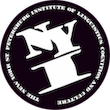Seminar: Ling J: Introduction to Syllable Structure
This class shows what the reasons are to suppose that the linear string of sounds has a hierarchical organization that has no direct phonetic manifestation: syllable structure. Basic syllabic patterns are reviewed, showing how exactly sounds cluster together. The target of the class is the classical syllabic model that is inherited from the 19th century and was revived in generative endeavour in the 1970s: onset-nucleus-coda and the syllabification algorithm that assigns these constituents to sounds.
On these grounds, specific syllabic phenomena are introduced: open vs. closed syllables, tonic lengthening, closed syllable shortening, compensatory lengthening, strong vs. weak positions, syllable weight, extrasyllabicity, sonority, s+C clusters, floating segments, empty constituents.
There are no prerequisites for this class, except basic knowledge of articulatory phonetics, i.e. the International Phonetic Alphabet (IPA). But even if you don't know what a labio-dental voiceless fricative is, you will be able to follow if you read through a 10-page tutorial introducing the IPA before session 2 that will be made available.

